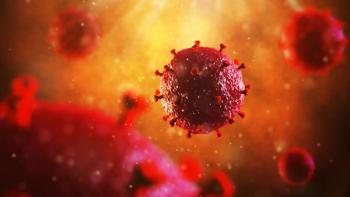
The Neglected HIV Epidemic
Why has the HIV epidemic shifted from affluent gay white men in New York and San Francisco to impoverished people of color in the South?
Black men who have sex with men (MSM) and who are infected with HIV have the least favorable health outcomes,
The findings are sobering given a
The 2016 CDC study also found that the South bears a disproportionate amount of the burden of HIV, making black MSM who live in the South particularly at risk for HIV.
What’s more, young black MSM are particularly at risk. Between 2005 and 2014, the number of new diagnoses of HIV among black MSM aged 13 to 24 jumped by 87%.
Which raises the question: why has the epidemic shifted from affluent gay white men in New York and San Francisco to impoverished people of color in the South?
In a feature article for
Ms. Villarosa profiles Cedric Sturdevant, a project coordinator at My Brother’s Keeper, a social services nonprofit in Jackson, Mississippi. She writes that Sturdevant acts as visiting nurse, motivational coach, and father figure to many black MSM living with HIV. Despite medical advances that have allowed many to manage HIV like a chronic illness, many of these men in Jackson look like AIDS patients from the early days of the epidemic: emaciated, bearing the mark of Kaposi’s sarcoma and other advanced AIDS-related illnesses.
Himself gay and HIV positive, Sturdevant says: “Young black men feel abandoned and need someone they can believe in and who believes in them.”
Without the support from family, community and church, some of these men lose hope and stop taking their medications. Shame, rejection, and ostracism about being both gay or bisexual and HIV positive has contributed. Living in a small town, where everybody knows each other, can compound the problem and interfere with seeking care.
But broader issues are at play, according to Villarosa. Decades of neglect by the US government, inadequate local healthcare infrastructure, and poverty are also involved. While the US government funded PEPFAR to fight HIV in Africa, it neglected such programs in the US. Discrimination and anti-science campaigns aimed at abstinence rather than promoting condom use and safe sex undermined HIV prevention campaigns in LBGTQ communities, she writes.
Obama finally spoke about the problem on World AIDS Day 2011, saying “When new infections among young black gay men increase by nearly 50% in three years, we need to do more to show them that their lives matter.”
But by then the crisis was well underway, and remedying it would require urgent action. So far, that hasn’t come. In the current political climate, threatened cuts to HIV prevention programs and the possible repeal of the Affordable Care Act, it might not come anytime soon.
Yet some are continuing the call to action, to expand testing and ensure access to PrEP and HIV medication.
Referring to the 2016 CDC study about lifetime risk of HIV, Eugene McCray, MD, director of CDC’s Division of HIV/AIDS Prevention, said in a press release: “These estimates are a sobering reminder that gay and bisexual men face an unacceptably high risk for HIV – and of the urgent need for action. If we work to ensure that every American has access to the prevention tools we know work, we can avoid the outcomes projected in this study.”
Newsletter
Enhance your clinical practice with the Patient Care newsletter, offering the latest evidence-based guidelines, diagnostic insights, and treatment strategies for primary care physicians.


























































































































































































































































































